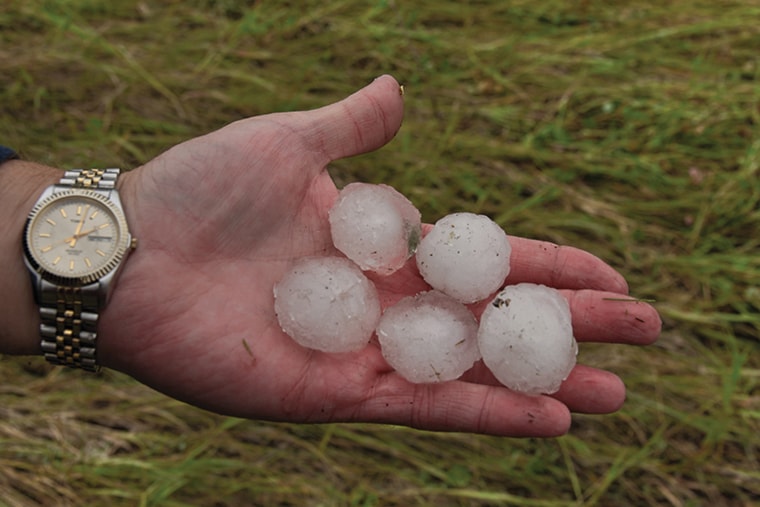When Central Alberta isn’t buried under snow, it’s probably being pelted with hail.
That’s what happens when you live in Alberta’s hail belt.
“There’s more hail in Central Alberta than any other region in the world,” said Larry Day, president of Pyramid Productions Inc., of Calgary, on Tuesday.
The hail belt stretches from north of Red Deer to south of Calgary, east to Medicine Hat and west to the foothills.
“That’s where the intensity really is, it’s in that belt. Some place, almost every day through the summer somewhere, it’s hailing.”
Day produced and directed a one-hour documentary, When Hail Attacks, that airs on CBC television at 7 p.m. on Saturday.
His research showed no one has died due to hail in the region, which has happened a few times during freak storms in other countries. But livestock has been killed in Central Alberta, he said.
“We get the most hail in the world. We don’t necessarily get the biggest.”
The documentary looks at why the region gets so much hail and how cloud seeding, using a small fleet of two-engine aircraft, reduces hail damage.
“Pilots fly into cloud formations of major thunderstorms, sometimes they’re already pretty violent, and they seed a chemical silver iodide into the clouds. The theory is by putting these little pellets into the clouds they convince the clouds to make more small-sized hail stones and fewer large hail stones.
“If they get it just right, they turn the hail into rain or at least pea-sized hail that doesn’t do very much damage.”
Cloud seeding, financed by the insurance industry, started in the 1970s and is now done for Red Deer, Calgary and communities in between.
Day said it used to be done in rural areas to protect crops and farmers favour a return to cloud seeding.
The documentary asks whether cloud seeding damages the environment. If not, should farmers also benefit.
“In a normal year (hail) is the most costly severe weather in Canada. It’s more costly than tornadoes or hurricanes or even floods.”
Red Deer’s most costly hail storm happened on July 3, 1991, and caused $28.2 million of insured damage losses. A 2008 Environment Canada report said that storm caused the equivalent of $40 million in damages (in 2008 dollars).
The next severe hail storm to hit Red Deer was Aug. 8, 2008 and also caused an estimated $40 million in damage.
Central Alberta earns its reputation largely because of the Rocky Mountains, Day said
“When the wind is coming just right it bumps the warm, moist air into the Rocky Mountains and creates updrafts, pushing the warm moist air up into the higher atmosphere as high as jets fly. At that height, the temperature is -30 to -50 so the moisture turns to ice.”
Day said everyone has a hail story so he gathered a few funny, heart-warming and sad stories.
As a Calgarian, Day said his story is typical — enough hail through the years to pummel plants, dent vehicles and he needed the roof on his house re-shingled. “Everyone’s been hit by hail at some time.”
szielinski@www.reddeeradvocate.com
